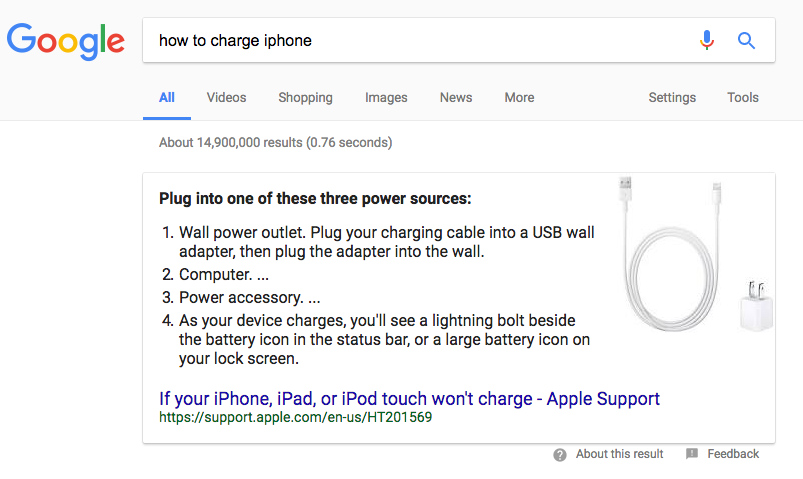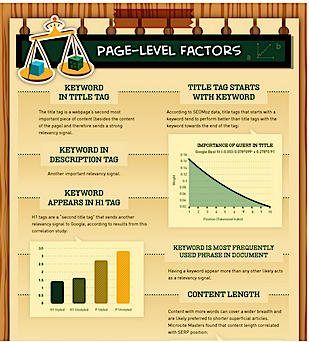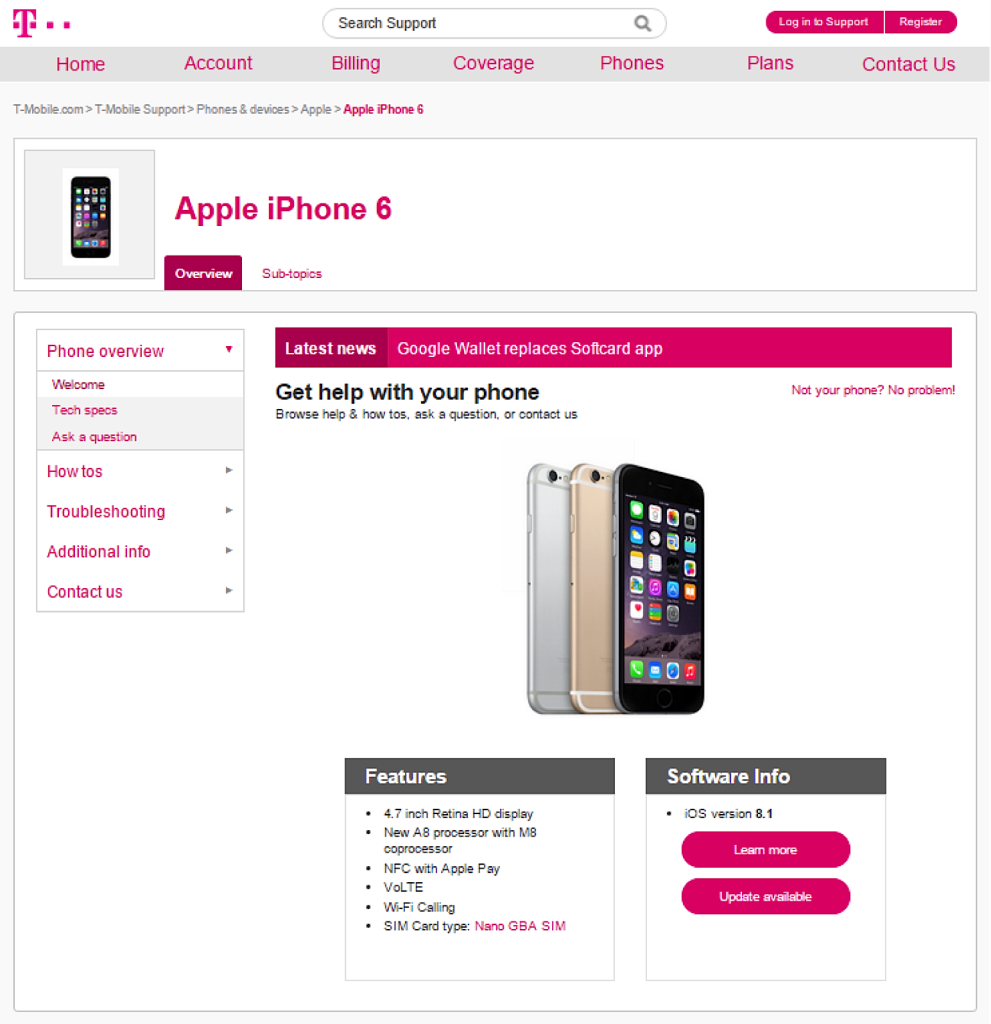What Is Enterprise SEO?
It’s quite tricky to pinpoint a universal definition for Enterprise SEO.
However, generally speaking it is: the practice of optimizing a large website, (with thousands or even millions of webpages) whilst navigating the internal politics of the enterprise in a way that keeps stakeholders happy.
With enterprise SEO there is a very strong emphasis placed upon two elements: scalability, and getting the whole website indexed.
Although the focus and management of enterprise SEO differs somewhat from basic SEO, the two forms share the same fundamental, well-known principles in common: use your target keywords in important areas, like your title tag and headline tags, pack your pages with high-value, high-converting content, and encourage backlinks from high-authority websites within your industry.
But while these recommendations are easy to implement on basic startup websites, what happens if you’re an enterprise website? What happens if, instead of needing to optimize five pages, you have nearly 500 to work with? Are you really expected to publish 2,000+ word, keyword-rich articles on each of them, in addition to driving quality backlinks to every page?
The problems and challenges faced by enterprise SEO websites are amplified relative to those experienced in more traditional SEO. Because of that, the challenge of enterprise SEO requires different strategies and a different approach.
It isn’t that the fundamentals of SEO aren’t applicable—they still are, whether your site hosts one page or one million. But the way that you have to apply these fundamental principles changes when you’re adapting SEO best practices to suit large websites. Below, we’ll describe how the two disciplines differ, as well as some recommendations for putting these enterprise level SEO practices to work on your site.
Further Reading:
- 10 Effective SEO Techniques to Drive Organic Traffic
- How to Implement a Cost-Effective SEO Strategy in 4 Steps
- Beginner’s Guide to Voice Search SEO
Key Differences in Enterprise SEO
There are some inherent benefits that come with running an enterprise site that you can capitalize on:
Authority: The majority of enterprise websites have strong brand recognition, and a high level of authority. These two elements combined are reflected by higher rankings in search engines, enabling enterprise SEO websites to leverage this authority, making the ability to rank for extremely competitive keywords more likely.
Content: Enterprise websites tend to have a large quantity of high quality content, that is extremely valuable to the end-user. These sites are therefore more likely to benefit from more backlinks and higher ranking. Furthermore, as enterprise sites have more pages, even if only a few of the pages acquired top rankings this could still drive significant amounts of organic traffic.
Learn More: LinkedIn Ads for Enterprise B2B SaaS: The Only Guide You’ll Need
Enterprise SEO Case Study: T-Mobile
For the purpose of this article, let’s use T-Mobile as an example. According to Google, the mobile phone giant has more than 25,000 pages indexed in its phones and tablet support section alone—above and beyond the pages listed in the other sales and support sections of its site.
Optimizing this volume of content by hand simply wouldn’t be possible, which is why the company uses a number of enterprise SEO factors and strategies to improve its search results performance.
Keyword-Optimized Template Creation
In constructing enterprise-level sites like T-Mobile’s, creating individual pages by hand isn’t feasible. As a result, websites like this typically run on content management systems (CMSs) that allow for the bulk creation of pages through the use of keyword-optimized templates and data entry en masse.
In this instance, the success or failure of enterprise-level SEO comes down to the creation of the underlying template. To meet on-site optimization standards, the template must:
- Have all proper tags in place (such as the meta description tag, image ALT tag, and machine-readable markup code) to allow for immediate, automated optimization.
- Include all necessary HTML, CSS, and Javascript design code, as well as code “hooks” that determine when the page should grab information from the CMS’s centralized database. For instance, enterprise page templates will include hooks that determine when the site should grab product pictures, product descriptions, product quantity, and more. The code must also be optimized for responsive display so that dynamically-generated pages are presented correctly on desktop and mobile devices.
- Be able to dynamically adjust content on the fly. If information is missing within the database, the template needs to be able to identify its absence and adjust the design accordingly. Similarly, pages need to be able to adjust on the fly for products that include multiple options, as well as product pages that contain a variable number of offerings.
Accurate Data Entry
Because so many enterprise websites rely on a central database from which information can be pulled automatically, it should go without saying that accurate data entry is a must. But in addition to being correct, the content stored in these systems must also:
- Be optimized with keyword-rich categories and subcategories. Not only will you need to apply a consistent categorization scheme to every entry you create, you’ll want to make sure these categories include your target keywords in a thoughtful way in order to optimize the eventual pages they’ll be used on (more on this in a minute).
- Be unique. Many reseller enterprise websites simply upload the stock information given to them by manufacturers. Doing so, of course, makes it difficult for these sites to rank, as they’re then forced to compete against every other merchant with the same website content. Instead, take the time to craft custom descriptions, tags, and other variables to include target keywords, as appropriate.
- Be valuable. Significant research has been done that supports the idea that long-form content performs better in terms of social shares, dwell time on site, and other metrics. And while 2,000+ word posts may not be appropriate as product descriptions, use this opportunity to ensure that the info you enter into your database provides significant value to your end users.
Certainly, all these steps take more time than simply copying and pasting stock information or half-assing the data you create. However, most enterprise-level webmasters will find that a little extra investment up front results in significantly better outcomes over the long run.
Thoughtful Keyword Selection
Above, I mentioned that keywords should be integrated into the categorization and navigation structures that you establish for your enterprise site. But what does that look like in practice, and how can you ensure that the optimization rules you define can be easily implemented across your entire site?
T-Mobile’s website provides a great example. Take a look at the URL for the company’s Apple iPhone 6 support page:
https://support.t-mobile.com/community/phones-tablets-devices/apple/iphone-6
Within the URL, you can see several keywords featured:
- The site’s primary keyword: “phones tablets devices”
- The brand: “Apple”
- The individual product: “iPhone 6”
By developing and implementing this consistent structure, T-Mobile ensures good inclusion rates for its most important keywords, while also requiring no hands-on involvement in optimizing each page for target words and phrases (beyond what went into building out the database’s categorization system in the first place).
Further Reading:
- The Content Marketer’s Guide to Keyword Research
- The Best Way to Track Your Keyword Rankings: An SEO Expert’s Strategy for 2018
- 3 Things We’ve Learned From Ranking For Competitive Keywords With Viral Traffic
Implementing Enterprise SEO
The recommendations above hint at important principles for implementing enterprise search engine optimization. Assuming that your company is using a database-driven CMS, such things as creating optimized web page templates, managing database information fastidiously, and planning for keyword inclusion are all important.
But beyond these logistics, there are a few organization-wide considerations that enterprise companies must take into account when it comes to effective enterprise SEO management.
Data, Data and More Data
Why is SEO important? Gathering and analyzing data is necessary for all websites, but it’s critical for enterprise SEO management teams because the more specific the data, the easier it is to test, spot trends, and fix problems. A few of the fundamental data priorities to be measured and managed include:
- The search engine rankings of the content. With SEO as the goal, measuring content rankings in the SERPs comes naturally. There are a number of different tools available to measure rank in relation to social shares, content type, device type, markets, and more.
- The performance of the content. Most enterprise companies want to see ROI in terms of the time and money they’ve invested in content creation. As a result, tracking data on the business impact of pages in terms of conversions and revenue is tremendously important. Impact can be measured down to the individual page to provide a granular assessment of what is and isn’t working on the site.
- The performance of conversion funnels. Content alone doesn’t create results. It only drives business performance if it’s integrated within and connected to established conversion funnels. Data regarding the effectiveness of your conversion paths may inform decisions about product offerings, checkout processes, and more.
Enterprise SEO: 2018 Trends
Influencer marketing isn’t a “paid” relationship per se, it is more of a mutually beneficial one.
Historically, large enterprises have focused heavily on paid relationships however, in more recent years large enterprises have begun incorporating influencer marketing.
For example, Gap’s Styld.by campaign harnessed the power of well-known bloggers and influencers, who were photographed wearing Gap clothing that was then posted across social media. Due to diversity of the influencers, Gap was able to expand their reach and to connect with niches they wouldn’t have fit into before.
Influencer marketing has opened up a window of opportunity in 2017 to rapidly expand your search visibility. According to Stacey DeBroff, founder of Influence-central, this year there will be a huge emphasis on genuine storytelling, video and geo-targeting.
Further Reading:
- How to Grow Your Business With Influencer Marketing
- 6 Tools that Make Tracking Your Influencer Marketing Campaigns Easy
- How to Get Started With Influencer Marketing
Featured Snippets
A featured snippet is a brief summary, that directly answers the user’s query. Featured snippets show up before the first search result, and being featured, is perceived by many as a badge of authority.
There are three types of featured snippet: Lists, paragraphs and tables.

If enterprises acknowledge this, and provide users with direct, tailored answers to their queries, the enterprise website will rank higher.
Read more about how to rank for featured snippets.
The Enterprise Team
One of the biggest challenges when it comes to enterprise SEO is managing the multiple stakeholders that may be involved in the process. In a smaller company, there might be one employee handling SEO as well as content creation, website code, etc.
On an enterprise team, SEO responsibilities may be split among IT/development, marketing, and creative workers—all of whom have different objectives:
- Content creators, for instance, focus on delighting the end user.
- To developers, website efficiency is a key metric.
- Meanwhile, the marketers may be the most concerned about search engine performance, but the least able to affect the changes needed to drive it.
- Even the C-suite needs to be onboard to approve the investment needed in order to do valuable SEO.
Implementing effective enterprise-level SEO requires bringing all these different departments together and allocating responsibilities in a way that ensures that everyone understands both the ultimate goal and their specific involvement in the process.
It’s a challenging feat, and unless your firm is going to hire a professional enterprise SEO company, this undertaking will require a skilled leader with the ability to delegate action items and motivate workers.
2 Key Tips for Getting Your Team on the Same Page
#1: Provide Adequate Training
As SEO responsibilities are shared across departments, SEO is inherently a team effort therefore everyone needs to be fully aware of the company goals and the strategic plan to achieve them.
This training program must be comprehensive, personalized to each department, and must be ongoing, so that every team member is continually updated, and that standards remain constant across the multidisciplinary team.
#2: Encourage Inter-Team Relationships
Many large corporations complain of having a lack of agility. This is due to the fact that when big money is involved, decisions have to be run by several members of the team before they are signed off, drawing out the process.
Communication can be improved by encouraging individuals with different specializations to interact, build relationships and improve communication.
Ultimately, enterprise SEO services—just like the Google algorithms that drive it—require the correct implementation of a number of moving parts, so you may want to hire an enterprise SEO agency or digital marketing agency to do it for you.
Related Content:
- 6 SEO Tactics for Maximum Customer Acquisition
- [Video] 5 SEO Strategies to Maximize Traffic
- 4 Ways to Speed Up Your Keyword Research
- How to Fix 15 Common On-Site Technical SEO Issues






